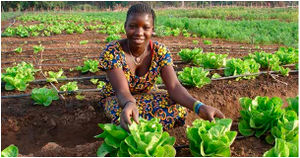SPIS Toolbox - Loan assessment: Adjust Repayment Plan to Cash Flow

Introduction
The Toolbox on Solar Powered Irrigation Systems (SPIS) is designed to enable advisors, service providers and practitioners in the field of solar irrigation to provide broad hands-on guidance to end-users, policy-makers and financiers. Risks related to system efficiency, financial viability and the unsustainable use of water resources can thus be minimized. The Toolbox comprises informative modules supplemented with user-friendly software tools (calculations sheets, checklists, guidelines). read more
Modules and tools touch upon:
- assessing the water requirements,
- comparing the financial viability,
- determining farm profitability and payback of investment in SPIS,
- sustainably design and maintain a SPIS,
- highlight critical workmanship quality aspects,
- and many more.

style="width: 160px; background-color: rgb(111, 142, 43);" | ►Back to the Module Page
Loan assessment: Adjust Repayment Plan to Cash Flow
SPIS, being based on agricultural activities, follows specific liquidity patterns, such as:
- irregularity, seasonality;
- farming-household mix;
- several cash generating activities (agricultural, non-agricultural);
- external shocks (climate, weather, pest, disease, prices).
Determining specific loan features (disbursement pattern, repayment rate, collateral, repayment frequency) should be based on cash flow projections of a particular case.
This means for the loan analysis process:
- in depth understanding of the farm and family economics;
- strong interaction with the potential borrower;
- networking with other sources of information in the sector and region;
- thorough understanding of the market and market trends;
- excellent staff with innovative attitudes.
SPIS goes along with high initial investment sums. These result in:
- long repayment periods (15-20 years);
- a need for high profitability of the SPIS;
- a need for a grace period at the beginning of the repayment plan.
Note: High installments resulting from very short loan repayment periods can create a threatening liquidity shortage – especially in the first years.
Outcome/Product
- Cash flow statement (current, projected);
- Tailor-made disbursement and repayment plan;
- Financial risk analysis/adjustment;
- Summarized risk analysis;
- Tailor-made loan details for decision.
Data Requirements
Collect, compute, prepare:
- total farm liquidity analysis (including household liquidity analysis (current + projected with SPIS));
- borrower’s own capital contribution;
- repayment potential;
- repayment plan;
- loan details.
People/Stakeholders
- Loan officers financing or planning to finance SPIS;
- Producer(s) / potential borrower;
- Management of financial service providers (operational level);
- Public entities promoting or/and subsidizing SPIS;
- Sponsors.
Important Issues
- Specific liquidity patterns need to be identified for every single case.
- Data collection process is challenging due to intermingled family-farm economy.
- High initial investment costs should ideally not lead to prohibitive transaction costs (consider bank-external subsidies);
- High initial investment costs should ideally not lead to liquidity shortages of the client due to high or very early installments (be flexible when defining installment plans).




















